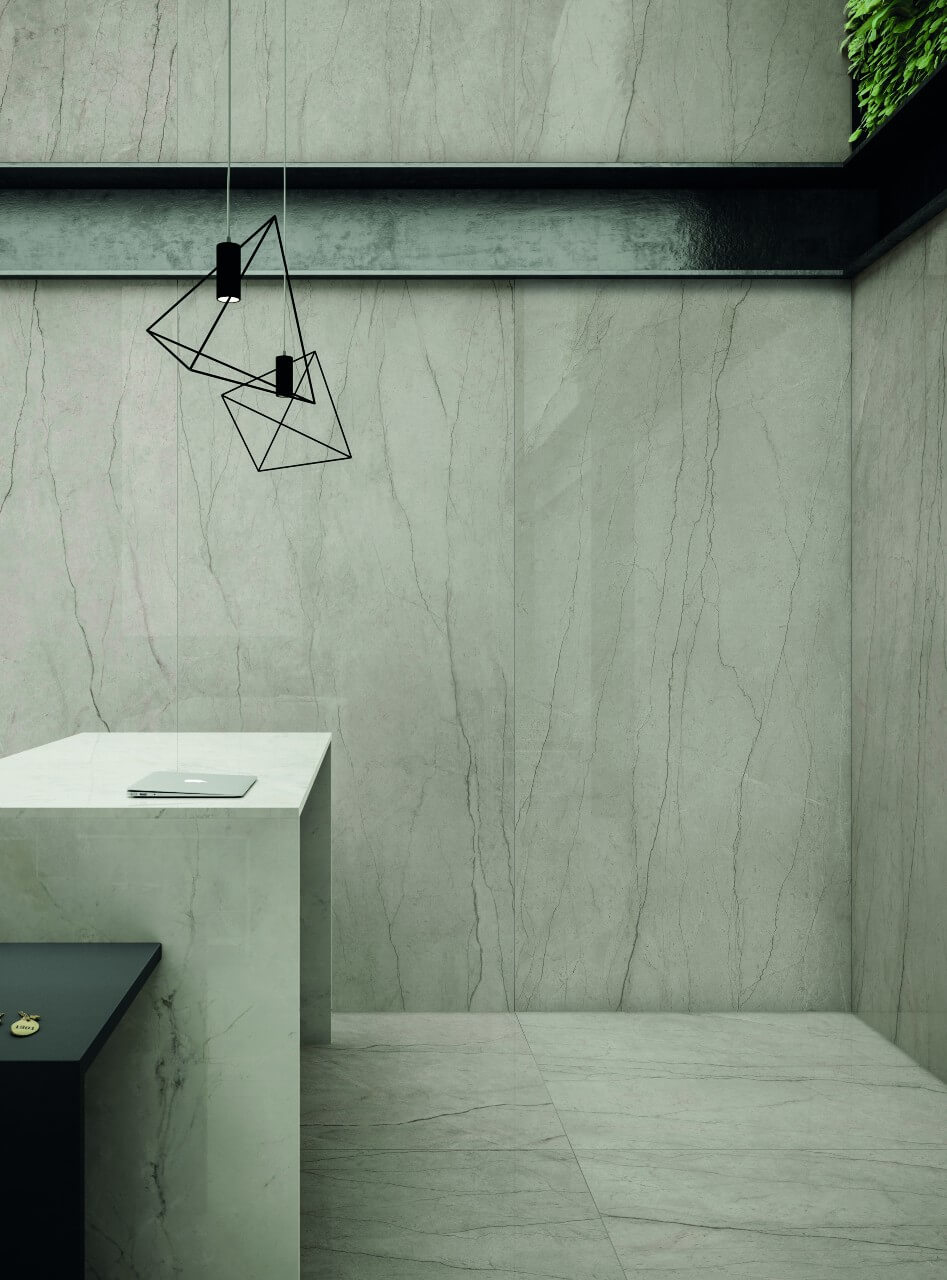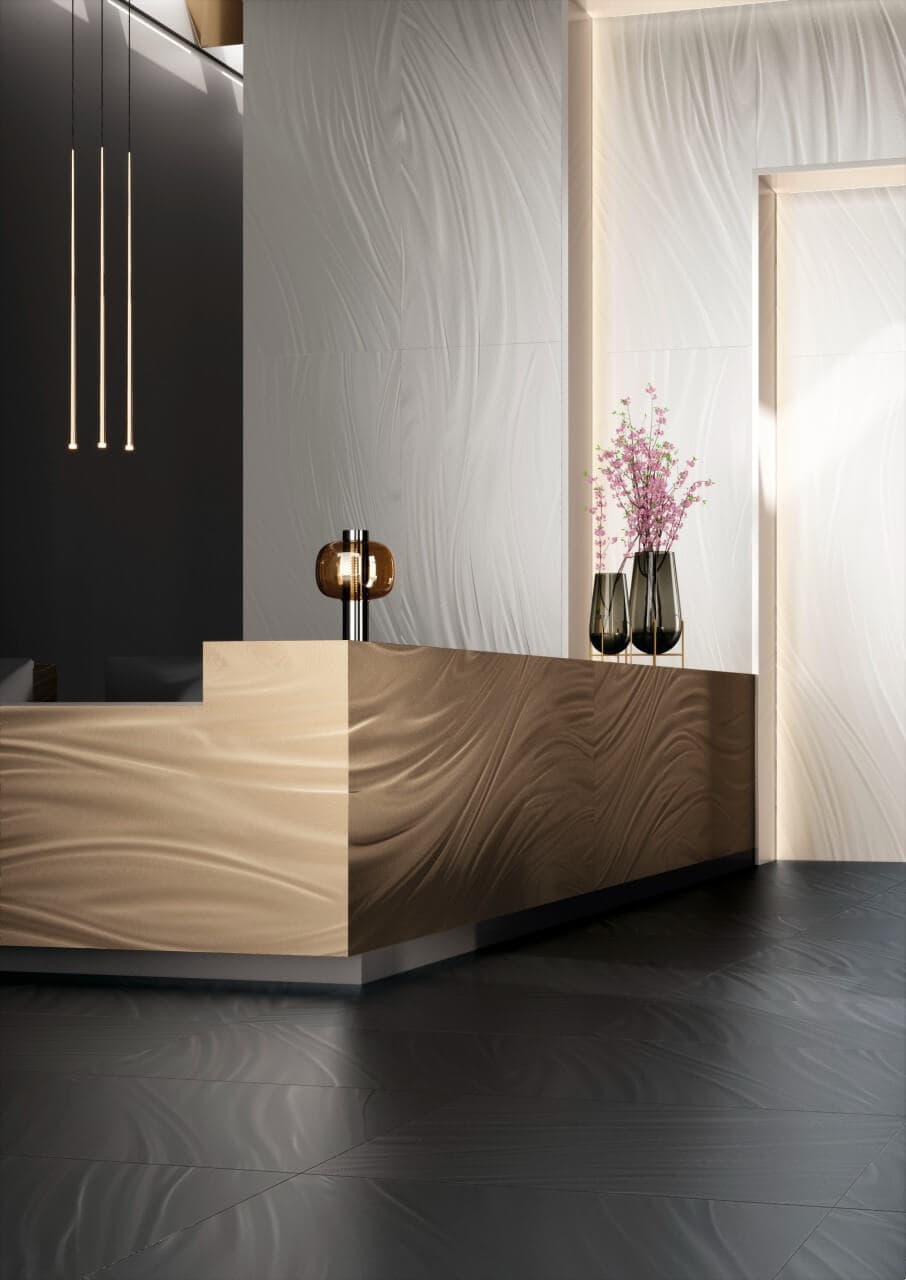Applications
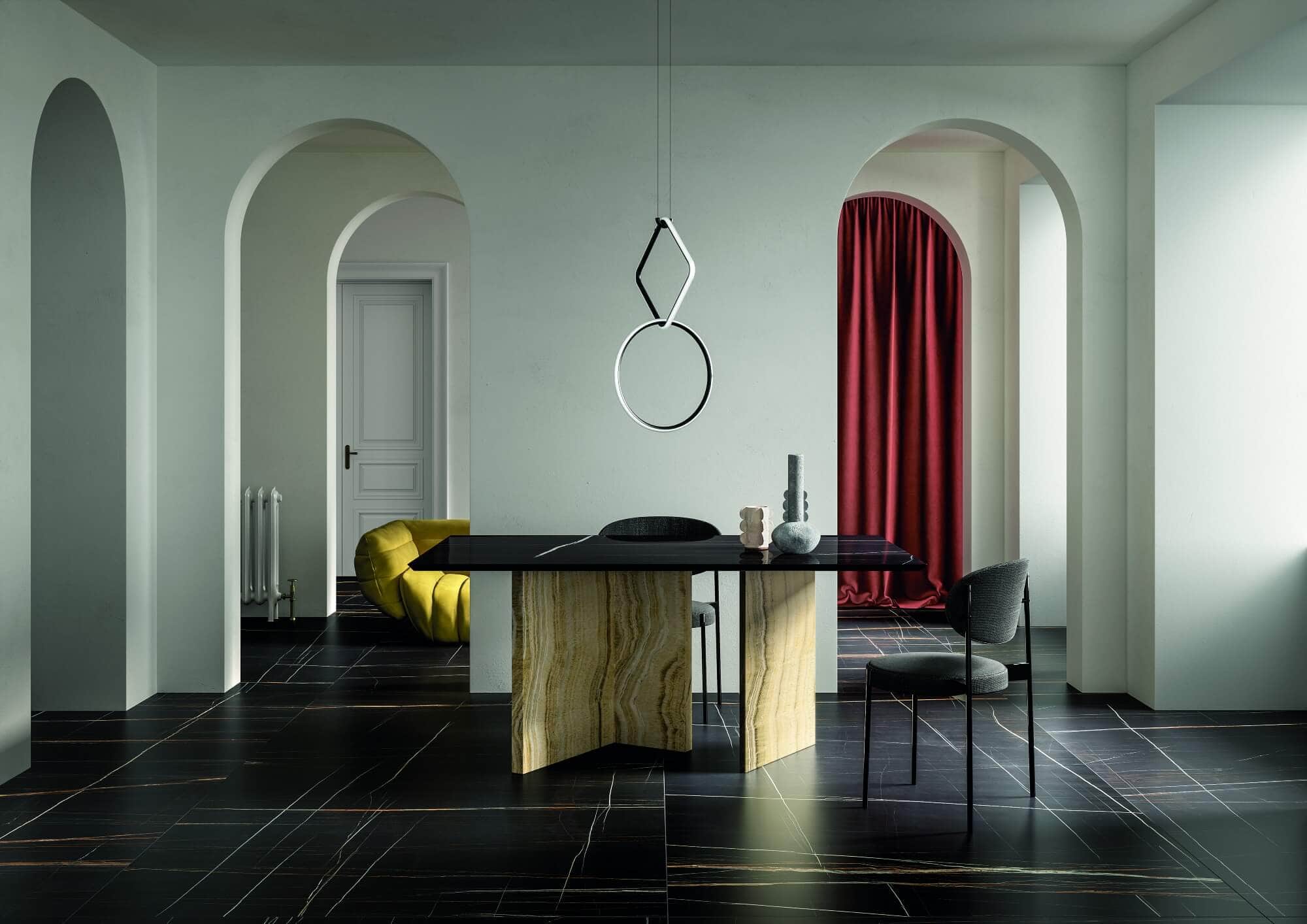
Advantages
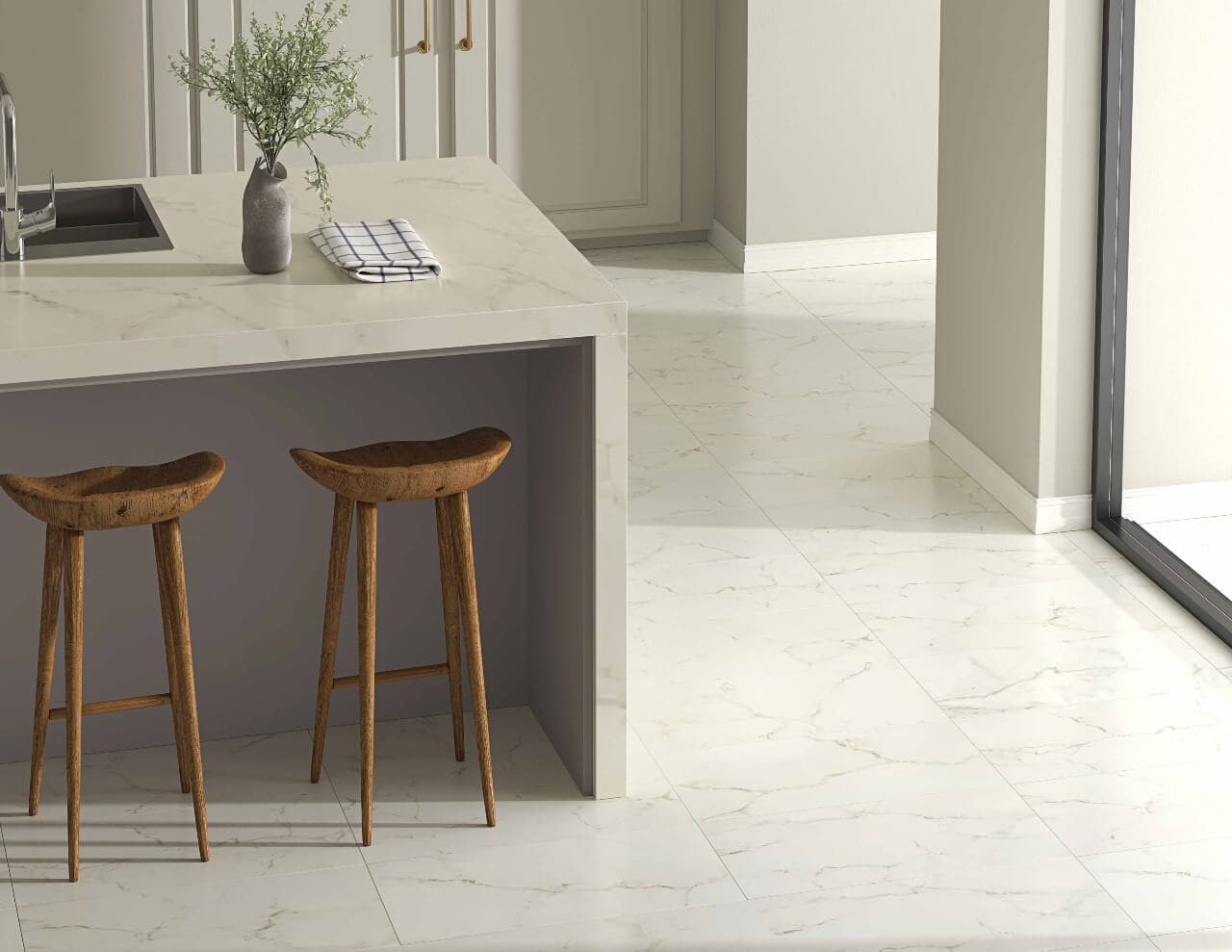
- Customization available to create one-of-a-kind furniture
- Ability to carry design themes throughout entire rooms or buildings
- Flame-, stain-, scratch, dent-, and water-resistant
- Functional and aesthetic advantages over other furniture materials
ROOM TYPE
Let your creativity shine through with ceramic tile furniture.
Gauged porcelain tile panels/slabs (GPTS) are becoming one of the most sought after materials for unique furniture fabrication. Ceramic tile, including porcelain tile, can be manufactured in a seemingly limitless number of natural looks, patterns, colors, and even textures. GPTS takes this versatility to the next level by showing off designs that measure as large as 10 x 15 feet with luxurious looks that include marble, onyx, and rare gemstones. These XXL panels/slabs provide a material alternative for unique furniture items.
Popular GPTS furniture includes kitchen islands and dining tables, cabinets, coffee tables, desks, benches, shelving, and large planters. Choose wood-look GPTS for a kitchen table, cabinets or built-in shelving, and granite-look GPTS for a kitchen island or desk. The large variety offered by GPTS means you can also choose a design with an untraditional look to match a particular aesthetic or branding design. Moreover, with the versatility of GPTS you can carry your favorite look throughout an entire room or building.
In addition to aesthetic advantages, GPTS provides a more durable and functional material for furniture than non-ceramic materials. Wood furniture can be susceptible to moisture damage, fading from sunlight exposure, and scratches. Glass tabletops can be susceptible to breaking, scratching, and the constant upkeep to keep fingerprints at bay. As with all types of ceramic tile, gauged porcelain tile is water-, stain-, fade-, and scratch-resistant, as well as low-maintenance. GPTS also has the advantage of being manufactured as thin as 3mm, giving it an advantage over natural stone, which is much heavier than GPTS and can be more difficult to install. Additionally, GPTS can be manufactured in large quantities with consistent quality and appearance — something that’s more difficult with natural stone.
Pro tip: GPTS can be installed over an existing surface material, such as a countertop. To determine if the look you have in mind is possible, consult your designer or tile installer.
GPTS furniture is custom made to meet your functional and design needs—indoors or outdoors. Typically, furniture exposed to the outdoors can be prone to water damage, such as fading, warping, melting, or rusting. GPTS is impervious to moisture so rusting and warping are not a concern and options are also available to withstand repeated freeze-thaw conditions. Likewise, GPTS won’t melt or distort from the heat of the sun as many plastic products can. As with all types of ceramic tile, GPTS contain no plastic. While some types of plastic are difficult or impossible to recycle, many tile factories are effectively closed-loop facilities with zero waste, high levels of recycling, and efficient resource management. Ceramic tile is one of the few surfaces that can be salvaged in a major renovation and also typically qualifies for use as clean fill.
Need more inspiration? Visit our design gallery and work with your designer or tile installer to discover all the possibilities for your next project.
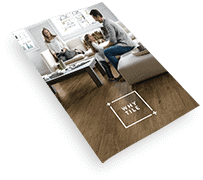
Download #OutsideTheBox: Your Tile Buying Guide…and get started now!

